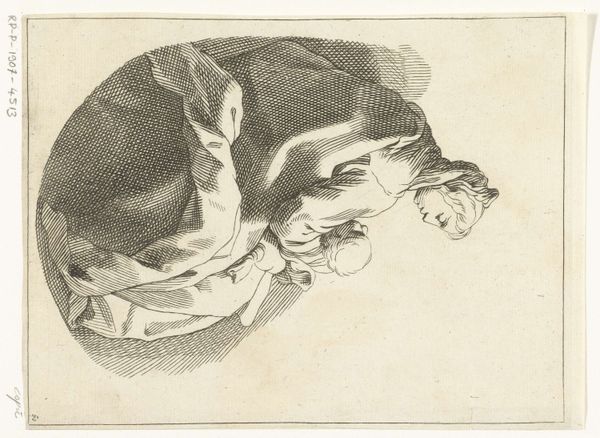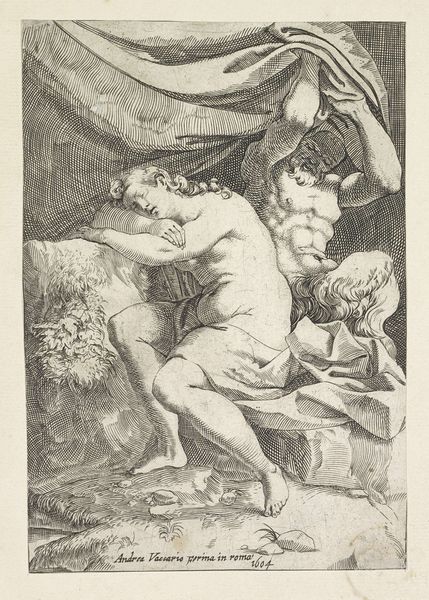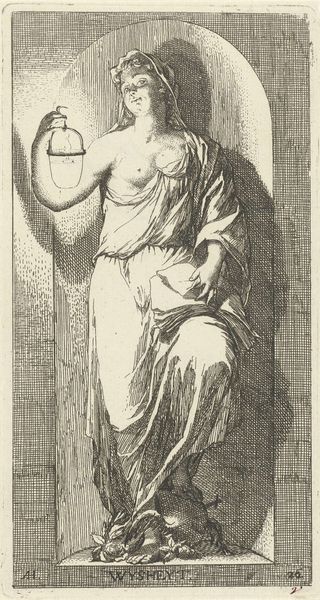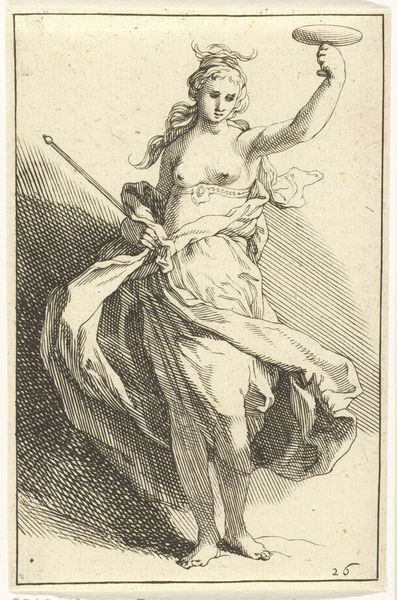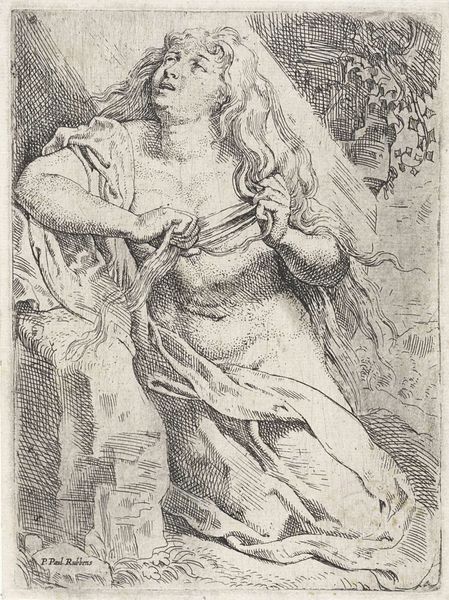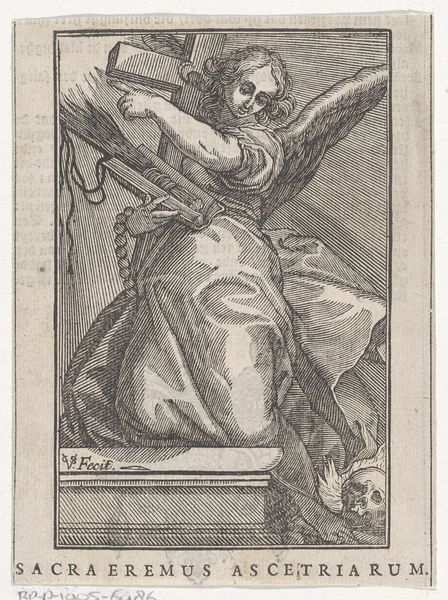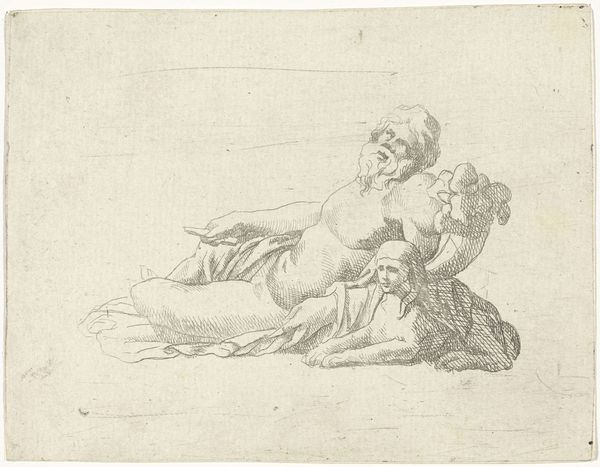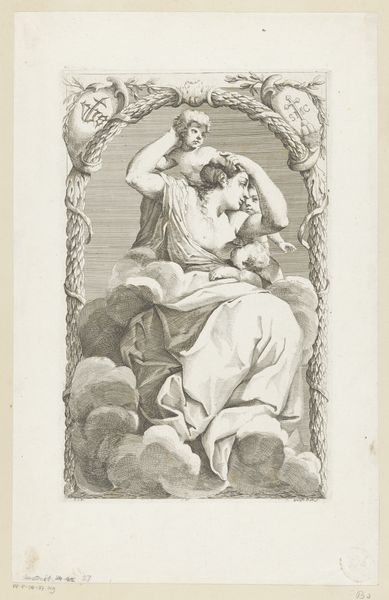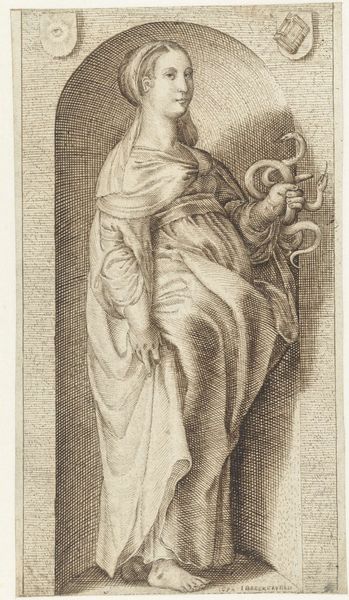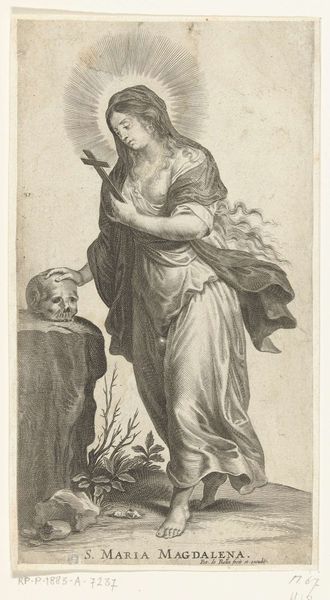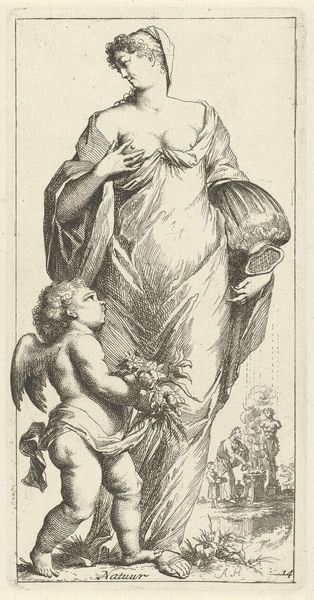
engraving
#
baroque
#
figuration
#
line
#
history-painting
#
nude
#
engraving
Dimensions: height 146 mm, width 88 mm
Copyright: Rijks Museum: Open Domain
Editor: This engraving, "Zwevende engel met banderol" by Jan de Bisschop, dates from 1668-1671 and lives here at the Rijksmuseum. I'm immediately struck by its sense of dynamism, the way the angel seems to twist and turn in mid-air. How do you interpret this work within its historical context? Curator: Well, viewing it through the lens of social history, one might consider how representations of angels functioned within the 17th century Dutch Republic. This period saw the rise of a powerful merchant class and, with it, shifts in patronage and the art market. What was the societal role of imagery like this? Who would have commissioned or purchased such a piece and why? Editor: So, beyond purely religious devotion, what other messages might it convey? Curator: Exactly. Think about the cultural fascination with the divine, the intersection of religious belief and societal power structures. Consider, too, the rise of academies and formal artistic training. Bisschop, in using the graphic medium of engraving, helped democratize access to classical and baroque ideals. How do you see the engraving medium shaping the reception of such imagery? Editor: That's interesting, because the lines have such clarity; it feels almost like a classical drawing, making it feel less explicitly religious than some Baroque art. Almost as if Bisschop is "classicizing" the angel. Curator: Precisely. The availability of engravings played a huge part in spreading visual ideas in the Early Modern period. The very act of disseminating idealized forms, even religious ones, impacted societal values and aesthetic tastes. Would you say that makes it almost "propaganda?" Editor: Maybe a little! Thinking about the broader cultural impact of these engravings definitely sheds new light on its purpose, beyond just depicting an angel. It makes you wonder about its audience, and its reach. Thanks! Curator: My pleasure. I hadn't thought so explicitly about the way prints shape the perception and propagation of "ideal form," as part of cultural value, so I found your insight rewarding.
Comments
No comments
Be the first to comment and join the conversation on the ultimate creative platform.
